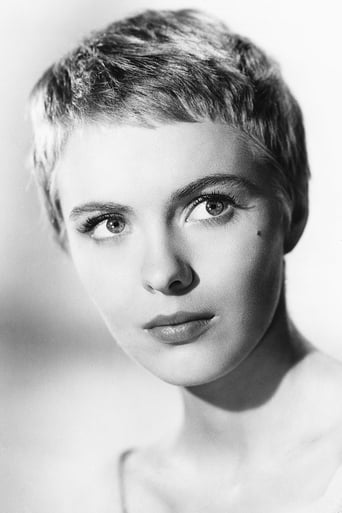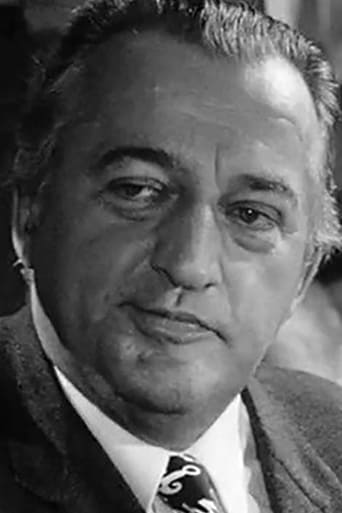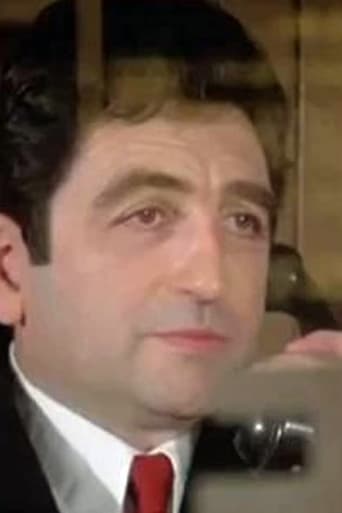Actuakers
One of my all time favorites.
AutCuddly
Great movie! If you want to be entertained and have a few good laughs, see this movie. The music is also very good,
Suman Roberson
It's a movie as timely as it is provocative and amazingly, for much of its running time, it is weirdly funny.
Calum Hutton
It's a good bad... and worth a popcorn matinée. While it's easy to lament what could have been...
morrison-dylan-fan
Looking for details on Jean-Paul Rappeneau's unexpectedly sweet 1966 Occupation Comedy A Matter of Resistance,I stumbled on a title by auteur film maker Claude Chabrol from the same year about the Occupation. Since the stylish bourgeoisie murder-mystery A Double Tour gave me a chance to see a Chabrol movie for the first time a few weeks ago,I decided that it was the perfect time to cross the line of Demarcation.The plot-Nazi-Occupied France:1941-Living by the divided line between Nazi Occupied and free France,the residence of a town try to go about their daily lives,as Nazis are sent in to take over the local government,and a growing black market for people to be taken over to free France starts to build. Freed from Nazi cells on condition that he collaborates with them,WWI vet Pierre is shocked to discover that his wife Mary has secretly become a Resistance fighter.Whilst Pierre learns of Mary's activates, Doctor Jacques Lafaye tries to keep the Nazis from tracking down a British radio operator,as Pierre has to decide which side of Demarcation he is on.View on the film:Claiming to have spent the entire shoot drunk,writer/director Claude Chabrol (who was advised to take the project by Anthony Mann) displays a magnificent confidence in the story,with Chabrol and cinematographer Jean Rabier boiling down the French New Wave flashes,for a tense,brooding Film Noir atmosphere.Following a frosty river over the Demarcation line,Chabrol and Rabier pull open the lines of collaboration that the towns people fear,as elegantly held extreme close-ups get up close to the suspicions and paranoia gripping the town.Keeping Pierre Jansen's minimalist score lingering in the background,Chabrol displays a sharp eye for "space",with stilted shots showing the town in its starkest form,surrounded by icy Film Noir shadows and a crushing mood of defeat.Inspired by French Resistance secret agent Gilbert Renault book,the screenplay by Chabrol places the horrors from WWI against the backdrop of the unfolding WWII,with Pierre wounded memories of WWI leading to a grudging tolerance of Nazi rule.Cutting down the belief at the time that (almost) all the people in Occupied France were Resistance figures,Chabrol strikes a Film Noir vein,by making Mary and Jacques Lafaye's acts of rebellion be exceptions to the complicit nature and acceptance of collaboration occupying the town.Soon to become a collaborator with Chabrol,the graceful Jean Seberg gives a fiery performance as Mary,whose rebellious streak Seberg lights up,as Mary finds herself alone against the Nazis and the memories of WWI holding Pierre back from fighting in the new war.Joined by a wonderfully considerate Daniel Gélin as Doctor Jacques Lafaye, Maurice Ronet gives an excellent performance as Pierre,thanks to Ronet brilliantly chipping away at Pierre's burnt state,via Pierre being a witness to Mary's brave acts of rebellion,which leads to Pierre deciding that it is time to cross the complacent line of Demarcation.
JasparLamarCrabb
Claude Chabrol's study of a Nazi occupied French village that is right on the border of the free zone. It's a situation that brings out the best and, in some cases, the worst in the villagers. Count Maurice Ronet & his wife Jean Seberg have had their manor home commandeered by the Germans and are relegated to living in their carriage house. Doctor Daniel Gélin fights with the resistance, while René Havard serves as a toadie for the Nazis, acting as their "interpreter" and supplying a lot more than just his translating talents. Each character in this film is fully fleshed out with idiosyncrasies exposed in short order. Ronet & Seberg are exceptional. Ronet gives a standout performance as an army veteran with a ravaged leg who turns out to be one of the village's gutsiest citizens. The music is by Pierre Jansen and the cinematography is by Jean Rabier, who shot many of Chabrol's films.
dbdumonteil
"La ligne de demarcation" is arguably the most successful Chabrol movie of his transitional period -roughly from "l'oeil du malin" (1963) to "la route de Corinthe (1967).Although there are many characters ,this is a well-constructed script ,adapted from the Colonel Remy's book.The film is dedicated to French men and women who became smugglers and helped soldiers and Jews to cross the demarcation line which divided France into two parts:occupied and unoccupied zone during WW2.Among many characters the couple Maurice Ronet/Jean Seberg stands out:he is a defeated officer,his war is over ,and he cannot get over the 1940 debacle.On the contrary her war has only begun .she's involved in resistance and he thinks at the beginning of the movie that finally what happened was fair cause the Germans are the strongest.Seberg's beauty illuminates the movie:her face when she hears the coded message "It's a long way to Gibraltar" is one of the rare moments of happiness in a somber movie.French are not all depicted as heroes.Some are hateful cowards ,who pretend they help the Jews and gives them away to the gestapo.In its way,"la ligne de démarcation" foreshadows several aspects of Chabrol future heyday.Two of his favorite actors ,Stephane Audran and Jean Yanne are already here ("le boucher").The entomological depiction of the villages like in the aforementioned movie is here too.And in some scenes (the attic,the burial, the forest where the patrol is on the prowl) Chabrol displays his skills of master of suspense .Good cast.
argus-10
In May 1940, the French army had suffered an astonishingly quick defeat against the Germans. As a consequence of the armistice signed in June 1940, France was divided into two parts bordered by the so-called line of demarcation. The northern part, including the entire Atlantic coast, was occupied by the Germans. The south, called "Zone libre", remained under French government. It was located at Vichy and headed by Word War I hero maréchal Pétain.The film is set in Winter 1941 in a village divided by the demarcation line, which coincides with a river at this section. A bridge crosses the river. Everyone who wants two pass over has to plead his legitimation to the Germans, who have set up a military command on the northern side in the castle of count Damville (played by Maurice Ronet). The count, a captain of the defeated French army, returns home from war, multiply wounded. He can walk with the help of a cane only. But he is also morally damaged. He doesn't believe in the sense of resistance against the Germans any more, quite in contrast to his wife, the countess (Jean Seberg). She is British-born, listens every evening to the BBC broadcast to France and helps a British crew, whose plane has been shot down, to escape to Gibraltar.The film offers a wide cross-section of possible behavior in times of occupation. There are collaborators, informers, résistance fighters, patriotic veterans from World War I, an upright doctor (Daniel Gélin) and a courageous teacher (Jean Yanne). The Germans are represented by an army major (Reinhard Koldehoff), who tries to keep his minimum standard of military decency, while two Gestapo agents act without any legal or moral inhibitions. The conflict rises to a climax when a British radio operator, working for the résistance, is found out and injured by the Germans. His comrades kidnap him from the hospital, and he hides at the teacher's house, where the countess nurses him. It turns out that the demarcation line not only cuts the French territory in two, but also segregates the French population into true patriots and vile cowards. The crossing of the bridge can also symbolize the change of moral sides.This may seem a bit too clear-cut. Indeed, with the exception of the major, the Germans are represented in the usual stereotypes. But the the French, especially the count, are shown with their doubts and weaknesses. And there are situations where you have to chose between one of two possibilities. A good deal of suspense is generated by the permanent danger of being found out by the Germans. So this film offers not only moral instruction, but also exciting pleasure, conveyed by good performances of Ronet and Seberg.




